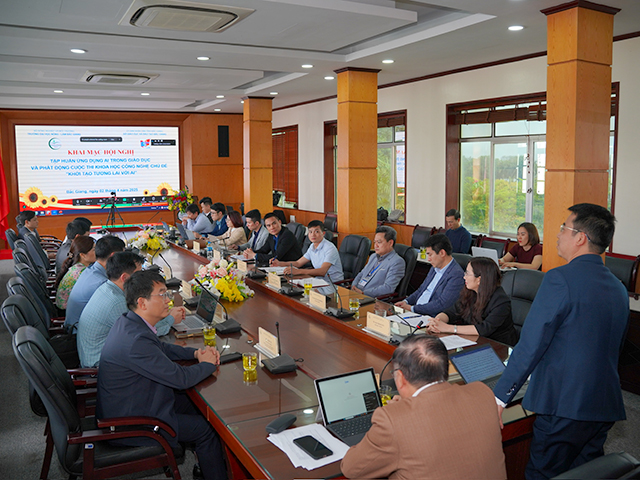(BAFU) – On March 30th, 2022, the delegation of Bac Giang Scientific Council led by Mr. Tu Quoc Hieu – Director of the Health Department, inspected and evaluated a model of growing Artemisia japonica Thunb in Son Dong district relating to the scientific topic “Research on Agro-biological characteristics and medicinal values of Artemisia japonica Thunb grown in Son Dong district, Bac Giang province”.
Representatives of Bac Giang Agriculture and Forestry University (BAFU) were Dr. Nguyen Tuan Diep, Vice Rector; Dr. Nguyen Tuan Duong – Head of Training Department, members and households participating in the model. The research objectives are to determine the agro-biological characteristics, medicinal values and the scientific nomenclature; to identify the species; to propose solutions to develop the model of growing Artemisia japonica Thunb in Bac Giang province.
.jpg)
.jpg)
The delegation inspecting and evaluating the model
During the implementation process, the participating members have coordinated with the locality, well-implemented the contents of the topic. The project manager has also been transferred the growing and harvesting techniques to the households with coordination and supervision between the Bac Giang Department of Science and Technology, Son Dong Agriculture and Rural Development Department, local government.
The project has successfully built 01ha of Artemisia japonica Thunb with yield of 7.5-8.0 tons (dry material/ha), the product price of about 20,000 VND/kg and fully consumed that has improved the income and gradually contributed to the sustainable development for people’s livelihood in Son Dong district, Bac Giang province.
“Artemisia japonica Thunb is a species with great importance in the history of medicine and was called the “mother of herbs” in the Middle Ages. It is a common herbaceous plant that exhibits high morphological and phytochemical variability depending on the location where it occurs. This species is well known almost all over the world. Its herb—Artemisiae vulgaris herba—is used as a raw material due to the presence of essential oil, flavonoids, and sesquiterpenoids lactones and their associated biological activities. The European Pharmacopoeia has listed this species as a potential homeopathic raw material. Moreover, this species has been used in traditional Chinese, Hindu, and European medicine to regulate the functioning of the gastrointestinal system and treat various gynecological diseases. The general aim of this review was to analyze the progress of phytochemical and pharmacological as well as professional scientific studies focusing on A. vulgaris. Thus far, numerous authors have confirmed the beneficial properties of A. vulgaris herb extracts, including their antioxidant, hepatoprotective, antispasmolytic, antinociceptive, estrogenic, cytotoxic, antibacterial, and antifungal effects. In addition, several works have reviewed the use of this species in the production of cosmetics and its role as a valuable spice in the food industry. Furthermore, biotechnological micropropagation of A. vulgaris has been analyzed”.
Source: Department of Science and International Cooperation








